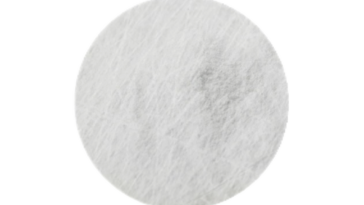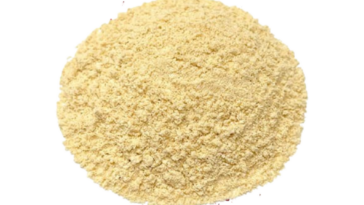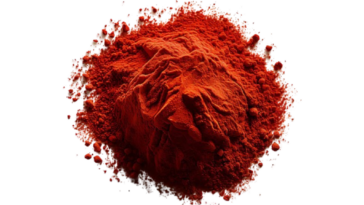Wheatgrass, scientifically known as Triticum aestivum L., has ancient origins deeply rooted in the fertile crescent of the Middle East, often referred to as the cradle of civilization. It traces its history back to the earliest agricultural societies, where wild grasses were first cultivated and domesticated around 10,000 years ago. Initially grown as a food staple, the young shoots of wheatgrass were eventually recognized for their medicinal properties by various ancient cultures, including the Egyptians, Mesopotamians, and ancient Chinese.
The modern popularity of wheatgrass as a health tonic can be attributed to the research and advocacy of agricultural chemist Dr. Charles Schnabel in the early 20th century. Schnabel discovered that young wheatgrass contains an abundance of vitamins, minerals, and enzymes, often in higher concentrations than mature plants. His work led to the commercialization of wheatgrass products and sparked a resurgence in its use as a nutritional supplement and detoxifying agent in the latter half of the 20th century. Today, wheatgrass is cultivated worldwide and consumed in various forms, including fresh juice, powdered supplements, and as an ingredient in health foods and drinks.
Vitamins & Minerals:
Wheatgrass, derived from the young shoots of the common wheat plant Triticum aestivum, is celebrated for its rich nutrient content, including a variety of vitamins and minerals crucial for human health. Here’s a comprehensive list of the vitamins and minerals found in wheatgrass along with a brief explanation of each:
- Vitamin A: This fat-soluble vitamin plays a pivotal role in vision, immune function, and cell growth. It acts as an antioxidant, protecting cells from damage caused by harmful molecules known as free radicals. In wheatgrass, vitamin A is present in the form of beta-carotene, a precursor that the body can convert into active vitamin A as needed.
- Vitamin C: An essential water-soluble vitamin, vitamin C is well-known for its immune-boosting properties and its role in collagen synthesis, which is crucial for skin health and wound healing. Additionally, it acts as an antioxidant, helping to combat oxidative stress and protect cells from damage.
- Vitamin E: Another fat-soluble antioxidant, vitamin E plays a vital role in protecting cell membranes from damage caused by free radicals. It also supports immune function and helps in the dilation of blood vessels, which aids in maintaining healthy circulation. In wheatgrass, vitamin E contributes to its antioxidant arsenal, promoting overall health and well-being.
- Vitamin K: Essential for blood clotting and bone health, vitamin K is a fat-soluble vitamin found in wheatgrass. It assists in the production of proteins that regulate calcium, which is crucial for bone mineralization and cardiovascular health. Adequate intake of vitamin K is essential for maintaining strong bones and preventing excessive bleeding.
- Vitamin B Complex: Wheatgrass contains various B vitamins, including B1 (thiamine), B2 (riboflavin), B3 (niacin), B5 (pantothenic acid), B6 (pyridoxine), and B9 (folate). These vitamins play key roles in energy metabolism, nerve function, red blood cell production, and DNA synthesis. They are essential for maintaining overall health and vitality.
- Calcium: Essential for bone health, calcium is a mineral found in wheatgrass that contributes to the formation and maintenance of strong bones and teeth. It also plays a role in muscle function, nerve transmission, and blood clotting, highlighting its importance for overall health and well-being.
- Iron: Wheatgrass is a good source of iron, a mineral crucial for the production of hemoglobin, the protein in red blood cells that carries oxygen from the lungs to the rest of the body. Adequate iron intake is essential for preventing iron deficiency anemia and maintaining energy levels.
- Magnesium: Involved in over 300 biochemical reactions in the body, magnesium is essential for muscle and nerve function, maintaining steady heart rhythm, and supporting the immune system. It also plays a role in regulating blood sugar levels and blood pressure, highlighting its importance for overall health and wellness.
Wheatgrass, with its impressive array of vitamins and minerals, offers numerous health benefits, ranging from bolstering the immune system to supporting bone health and beyond. Incorporating wheatgrass into your diet can be a convenient way to boost your intake of these essential nutrients and support your overall health and well-being. Whether consumed as a juice, powder, or supplement, wheatgrass stands as a nutritional powerhouse, offering a plethora of vitamins and minerals vital for optimal health.
Probiotic, Prebiotic, or Postbiotic:
Wheatgrass (Triticum aestivum L. leaf) isn’t traditionally classified as a probiotic, prebiotic, or postbiotic. However, it does possess certain properties that could indirectly support gut health.
- Prebiotic-like properties: While not a true prebiotic, wheatgrass contains dietary fiber, which can act as a substrate for the growth of beneficial gut bacteria. Although it doesn’t specifically target or selectively promote the growth of beneficial bacteria like prebiotics do, the fiber content can still support overall gut health by providing a substrate for fermentation in the colon.
- Nutrient-rich: Wheatgrass is packed with nutrients, including vitamins, minerals, and antioxidants. These nutrients can support overall health, including gut health. A healthy gut environment can indirectly support the growth of beneficial bacteria.
- Alkalizing effect: Some proponents claim that wheatgrass has an alkalizing effect on the body. While the evidence for this is debated, it’s theorized that alkaline diets may support the growth of beneficial bacteria in the gut. However, more research is needed to confirm this.
- Chlorophyll content: Wheatgrass is rich in chlorophyll, which has antioxidant properties and may have some benefits for gut health. However, more research is needed to understand the specific effects of chlorophyll on gut bacteria.
While wheatgrass itself may not directly act as a probiotic, prebiotic, or postbiotic, its nutrient content and potential indirect effects on gut health may contribute to a healthy gut microbiome when consumed as part of a balanced diet.
Dietary & Health Information:
Wheatgrass, derived from the young shoots of the wheat plant Triticum aestivum, is often hailed for its potential health benefits due to its rich nutrient content. Here’s some dietary and health information regarding wheatgrass:
- Nutritional Content: Wheatgrass is a potent source of various nutrients including vitamins, minerals, antioxidants, and enzymes. It contains vitamins A, C, E, and K, as well as several B vitamins. It also provides minerals like iron, calcium, magnesium, and amino acids.
- Health Benefits: Advocates of wheatgrass claim various health benefits, including boosting the immune system, improving digestion, detoxifying the body, and potentially reducing inflammation. However, scientific evidence supporting these claims is limited and further research is needed to confirm its efficacy.
- Potential Risks: While wheatgrass is generally considered safe for most people when consumed in moderation, there are some potential risks to be aware of. Some individuals may experience nausea, headaches, or allergic reactions when consuming wheatgrass juice. People with gluten intolerance or wheat allergies should avoid wheatgrass products unless they are certified gluten-free.
- Maximum Daily Intake: There is no standard recommended daily intake for wheatgrass. However, it’s generally recommended to start with small amounts, such as 1-2 ounces of wheatgrass juice per day, and gradually increase as tolerated. It’s essential to listen to your body and discontinue use if you experience any adverse reactions.
- Preparation and Consumption: Wheatgrass is commonly consumed as a juice or powder. Fresh wheatgrass can be juiced at home using a juicer, or it can be purchased as a ready-to-drink juice or powdered supplement. When consuming wheatgrass juice, it’s best to drink it on an empty stomach to maximize absorption of nutrients.
- Quality and Safety: When purchasing wheatgrass products, it’s essential to choose reputable brands that follow good manufacturing practices and ensure product safety. Organic and certified gluten-free options may be preferable for individuals with specific dietary preferences or sensitivities.
As with any dietary supplement, it’s a good idea to consult with a healthcare professional before adding wheatgrass to your diet, especially if you have any underlying health conditions or concerns.




 No products in the cart.
No products in the cart.